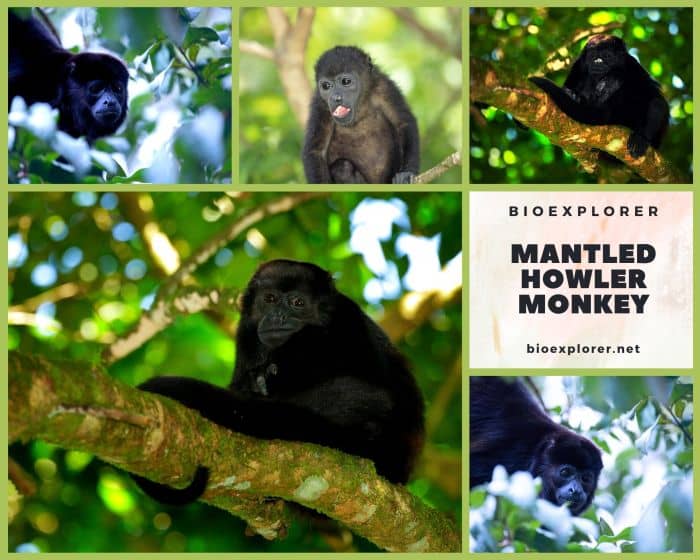
| Animalia | Primates | Atelidae | Alouatta | Alouatta palliata |
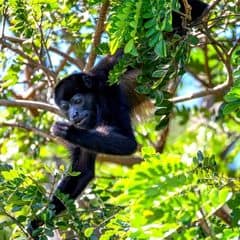

- Common Name: Mantled Howler
- Taxonomy Classification Year: 1849
- Monkey Size: 38 to 58 cm (14.96 to 22.83 in)
- Skin Color(s): Black
- Habitat: Forest, rainforest
- Diet: Herbivorous
- Native Countries: Honduras, Colombia, Ecuador, Guatemala
Mantled Howler Distribution
Mantled Howler Monkey Characteristics
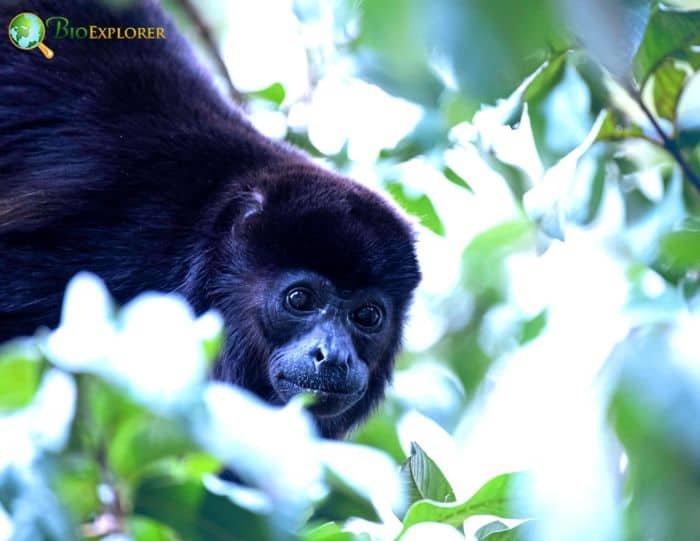
The Mantled howler monkey[1] (Alouatta palliata) is a species of howler monkey, a New World monkey native to South and Central America.
- It is among Central America’s most commonly seen and heard monkey species in the wild.
- These South American monkeys have large and stocky black fur, and most individuals have long saddles of brown or yellow fur.
- Long mantled hairs are on its flanks, earning the common name “mantled” howler monkey.
- The face is bare, black, and bearded, and the prehensile tail has a bare pad on the underside near its base.
- Males have a distinctive white scrotum, weigh 6-7 kg, and generally have longer beards than females.
- Adult females typically weigh 4-5 kg , and juveniles weigh 0.4 kg and appear silver to a golden brown.
- The adult tail size of these howlers ranges from 520 to 670 mm and body length from 380 to 580 mm.
What Do Mantled Howlers Eat?
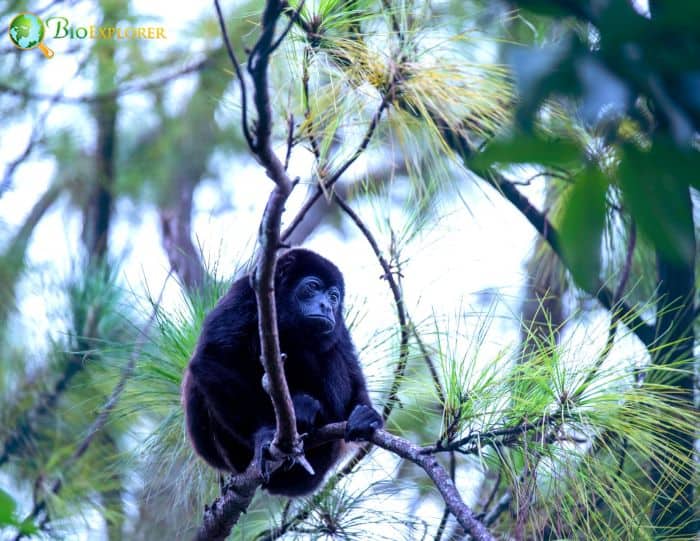
Being herbivorous, the Mantled Howler feeds on many plants including:[¶]:
- Cedro Macho (Aralia excelsa).
- Strawberrytree (Muntingia calabura)
- Gumbo Limbo (Bursera simaruba).
- Breadnut (Brosimum alicastrum)
- False Chiggergrape (Coccoloba venosa).
- Guarumo (Cecropia obtusifolia)
- Chirimoya (Annona spraguei)
- Pumpwood (Cecropia peltata)
- Abas (Psidium guajava)
- Conejo (Protium tenuifolium)
- Panama Hat Plant (Carludovica palmata).
- Amate (Ficus obtusifolia)
- Panama Tree (Sterculia apetala).
- False Coffee (Faramea occidentalis).
- Guarumo Amarillo (Cecropia longipes).
- Jagua (Genipa americana)
- Guabo Pachón (Inga goldmanii).
- Requia Colorada (Trichilia cipo).
- Icecreambean (Inga edulis)
- Mango (Mangifera indica)
- Star Apple (Chrysophyllum cainito).
- Angelica Tree (Dendropanax arboreus).
- Smooth Manjack (Cordia laevigata).
- Hogplum (Spondias mombin)
- Pachiuba (Socratea exorrhiza)
- Malaysian Apple (Syzygium malaccense).
Mantled Howler Monkey Facts
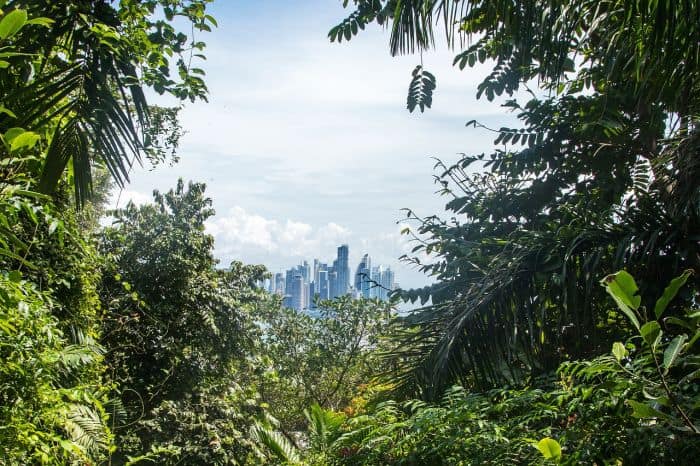
- The species gets its name “mantled” from the long, protective hairs on its sides.
- In general, mantled howler monkeys lead a strictly conservative life, which may be related to diet and feeding style as they spend most of their time foraging.
- There is a sexual variation in locomotion style, with males climbing less, jumping more, and preferring a high canopy compared to females.
- Mantled howler monkeys maintain linear hierarchies and display complex interactions within the social group.
- Group size varies between 10 and 20 members, usually 1 to 3 adult males and 5 to 10 adult females.
Suggested Reading: Various Other Monkeys
Cite This Page
APA7MLA8Chicago
BioExplorer.net. (2025, December 19). Mantled Howler Monkey. Bio Explorer. https://www.bioexplorer.net/animals/mammals/monkeys/mantled-howler-monkey/.
BioExplorer.net. "Mantled Howler Monkey" Bio Explorer, 19 December 2025, https://www.bioexplorer.net/animals/mammals/monkeys/mantled-howler-monkey/.
BioExplorer.net. "Mantled Howler Monkey" Bio Explorer, December 19 2025. https://www.bioexplorer.net/animals/mammals/monkeys/mantled-howler-monkey/.











